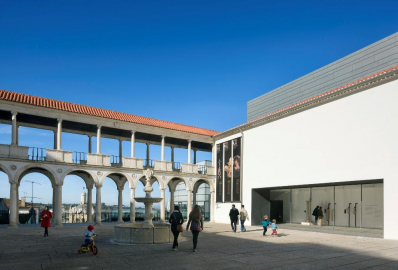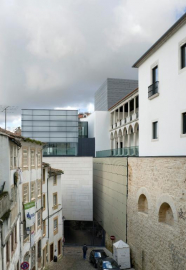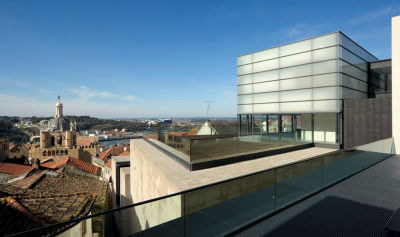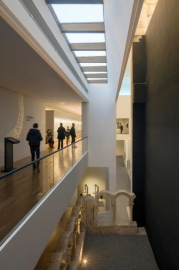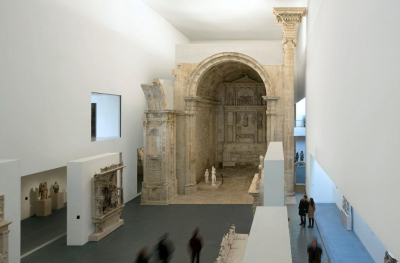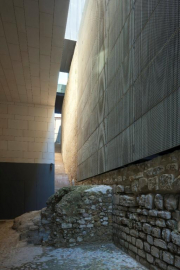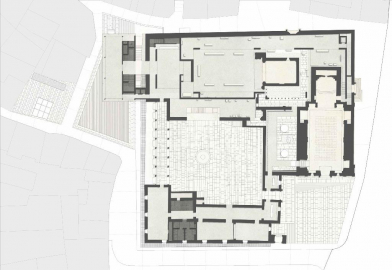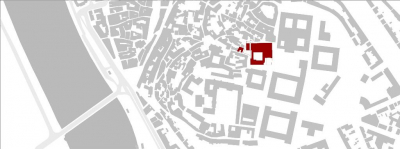National Museum Machado de Castro
The museum, located at Alta of Coimbra, is a place of intense sedimentation and historical superimposition over two millennia where lies the Roman Forum Aemininum, the Romanesque church of S. João de Almedina, the gallery of Terzi.
The lucid acceptance of contemporary criticism of these sequences, whence the constant mingling of "container" and "content", is the primary feature of the project in order to correct the rupture of scale and historical context caused by random juxtapositions: two elemental volumes define a flooded neutral space, illuminated by diffuse light to show the temporal sequence of the fragments of the 18th century apse of the Tesoureiro Chapel. The gallery occupies the entire volume of the trapezoidal shape, rising to four levels and creating a platform (the terrace of the restaurant) where it lays the rectangular volume of transparent and translucent glass that at night becomes a sort of lantern light. The lower volume adapts to the existing layout of the streets, the stone cladding is not mimetic, but consistent with the solid matter of the surrounding buildings; implantation repeats the settlement solution, morphological and hierarchical originally tied to the cryptoporticus of the Roman Forum which in its turn is tied to the museum. The experience of space is revealed as a sort of condenser of the surrounding city, explained around the visit by similarities, analogies or contrasting perspectives of the city itself and its centuries-old history in a unified perception of beauty.
Due to the complex nature of the historical remains, and specially of the cryptoporticus, there was a careful work of demolition and new construction in order to obtain a sustainable balance between the different systems of construction and reduce their impact on this base.
Area of construction: 13.130 m²
Area of the site: 5.100 m²

